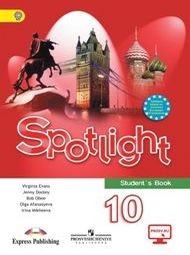
Учебник английского языка для 10 класса, автор – Ваулина, представляет собой увлекательный и структурированный подход к обучению школьников. В нем удачно сочетаются теоретический материал, упражнения для практики и интересные задания, способствующие развитию всех языковых навыков. Это пособие подходит как для самостоятельного изучения, так и для работы на уроках.
ГДЗ по Английскому Языку 10 Класс Модуль 2b Номер 10 Ваулина — Подробные Ответы
Используйте фразы в упр.9, чтобы составить предложения: например, провести день вместе, арендовать DVD, пойти на рыбалку со мной, идти на выставку.
Fancy spending the afternoon together? Would you like to come fishing with me? How about going to the Da Vinci exhibition tomorrow?
Fancy renting a DVD?
(Хочешь провести вторую половину дня вместе? Хотите поехать на рыбалку со мной? Как насчет того, чтобы сходить на выставку Да Винчи завтра?
Хочешь взять в прокат DVD?)
Would you be interested in spending the afternoon with me? How about joining me for a fishing trip? What do you think of visiting the Da Vinci exhibition tomorrow?
A: «Would you be interested in spending the afternoon with me? I was thinking we could go for a walk in the park.»
B: «That sounds lovely! How about joining me for a fishing trip tomorrow morning?»
A: «I’d love to, but I have an idea. What do you think of visiting the Da Vinci exhibition tomorrow afternoon? I’ve heard it’s amazing.»
B: «That could be fun! Afterward, would you like to rent a DVD and watch a movie together?»
A: «Perfect plan! I’m looking forward to it.»
Explanation: This phrase is a polite and somewhat formal way to invite someone to spend time with you in the afternoon. It’s softer than saying directly, “Do you want to spend the afternoon with me?” It offers the person a chance to think about it without feeling pressured.
Context: This can be used when you want to spend time with someone but aren’t sure about their plans or preferences. It’s friendly and respectful.
Example:
«Would you be interested in spending the afternoon with me? I was thinking we could go grab a coffee and take a walk in the park.»
(This offers the idea of spending the afternoon together in a low-key, pleasant way.)
2. How about joining me for a fishing trip?
Explanation: This is a casual invitation for someone to join you in a specific activity—in this case, a fishing trip. It’s informal and friendly, and it uses «How about» to introduce a suggestion.
Context: This phrase is great when you’re inviting someone to participate in an activity you’ve already planned or are planning to do. It implies that the other person has the option to join but doesn’t force them into it.
Example:
«How about joining me for a fishing trip this weekend? It’s going to be relaxing, and we’ll enjoy some good time outdoors.»
(This is a friendly and enthusiastic way to invite someone to a fun, leisurely activity.)
3. What do you think of visiting the Da Vinci exhibition tomorrow?
Explanation: This expression asks for someone’s opinion or feedback about a specific idea. “What do you think of” is a polite way to ask someone’s thoughts about a plan or suggestion. It implies that you’re open to their response and might be willing to adjust if they’re not interested.
Context: This can be used when suggesting an event, activity, or outing, like a museum visit or exhibition. It’s an open-ended way to gauge someone’s interest before making any final plans.
Example:
«What do you think of visiting the Da Vinci exhibition tomorrow? I’ve heard it’s an amazing collection of artwork!»
(This is a way to gauge interest while also giving a little background to help the person decide.)
4. Would you like to rent a DVD?
Explanation: This is a straightforward and casual invitation to watch a movie together. Using “Would you like” makes the invitation polite, and it’s not a strong demand, just an offer.
Context: This is often used when you want to spend a relaxing evening with someone, such as watching a movie at home. It’s informal and works well for suggesting a simple, laid-back activity.
Example:
«Would you like to rent a DVD and have a movie night at my place tonight? We can order some pizza and just relax.»
(This is an easygoing way to suggest a chill evening together without any pressure.)



Оставь свой отзыв 💬
Комментариев пока нет, будьте первым!